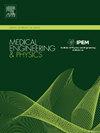Mixture density knowledge distillation in super-resolution reconstruction of mri medical images
IF 1.7
4区 医学
Q3 ENGINEERING, BIOMEDICAL
引用次数: 0
Abstract
Motivation
MRI medical image reconstruction frequently suffers from a smoothness bias, resulting in sub-optimal multi-valued mapping fitting. Mixture Density Networks (MDNs) offer a potential solution by modeling multi-valued functions via multiple components. However, numerical instability in MDNs undermines their performance. Moreover, the super-resolution task is inherently difficult due to its ill-posed nature.
Description
To overcome these challenges, we introduce MixtUre densiTy knowlEdge Distillation (MUTED), a novel framework for super-resolution reconstruction. MUTED integrates the MDN module to mitigate boundary blurring, addresses MDN's numerical instability via an adversarial approach, and employs regularization derived from knowledge distillation to handle the ill-posed problem.
Results
Extensive experiments on the IXI and BraTS21 datasets show that our MUTED framework effectively produces high-quality reconstructions. It outperforms existing methods in handling boundary blurring and numerical instability, as evidenced by experimental and visualization results.
Conclusion
MUTED surpasses state-of-the-art (SOTA) methods with a reduced computational cost and outperforms competing knowledge distillation methods. By addressing numerical instability and leveraging the regularization constraint, MUTED offers a robust solution for high-quality image reconstruction. Furthermore, the aleatoric uncertainty formulated by the MDN serves to reveal sharpened boundaries. This, in turn, effectively facilitates the efficient enhancement of the super-resolution reconstruction quality.
混合密度知识蒸馏在mri医学图像超分辨率重建中的应用
动机mri医学图像重建经常遭受平滑偏差,导致次优的多值映射拟合。混合密度网络(mdn)通过多个组件建模多值函数,提供了一种潜在的解决方案。然而,mdn的数值不稳定性破坏了它们的性能。此外,由于其病态性质,超分辨率任务本身就很困难。为了克服这些挑战,我们引入了混合密度知识蒸馏(静音),这是一种超分辨率重建的新框架。该算法集成了MDN模块以减轻边界模糊,通过对抗方法解决了MDN的数值不稳定性,并采用源自知识蒸馏的正则化来处理不适定问题。结果在IXI和BraTS21数据集上的大量实验表明,我们的静音框架可以有效地产生高质量的重建。实验和可视化结果证明,该方法在处理边界模糊和数值不稳定性方面优于现有方法。结论该方法的计算成本比SOTA方法低,优于其他知识蒸馏方法。通过解决数值不稳定性和利用正则化约束,静音提供了高质量图像重建的鲁棒解决方案。此外,由MDN形成的任意不确定性有助于揭示锐化的边界。这反过来又有效地促进了超分辨率重建质量的高效提高。
本文章由计算机程序翻译,如有差异,请以英文原文为准。
求助全文
约1分钟内获得全文
求助全文
来源期刊

Medical Engineering & Physics
工程技术-工程:生物医学
CiteScore
4.30
自引率
4.50%
发文量
172
审稿时长
3.0 months
期刊介绍:
Medical Engineering & Physics provides a forum for the publication of the latest developments in biomedical engineering, and reflects the essential multidisciplinary nature of the subject. The journal publishes in-depth critical reviews, scientific papers and technical notes. Our focus encompasses the application of the basic principles of physics and engineering to the development of medical devices and technology, with the ultimate aim of producing improvements in the quality of health care.Topics covered include biomechanics, biomaterials, mechanobiology, rehabilitation engineering, biomedical signal processing and medical device development. Medical Engineering & Physics aims to keep both engineers and clinicians abreast of the latest applications of technology to health care.
 求助内容:
求助内容: 应助结果提醒方式:
应助结果提醒方式:


